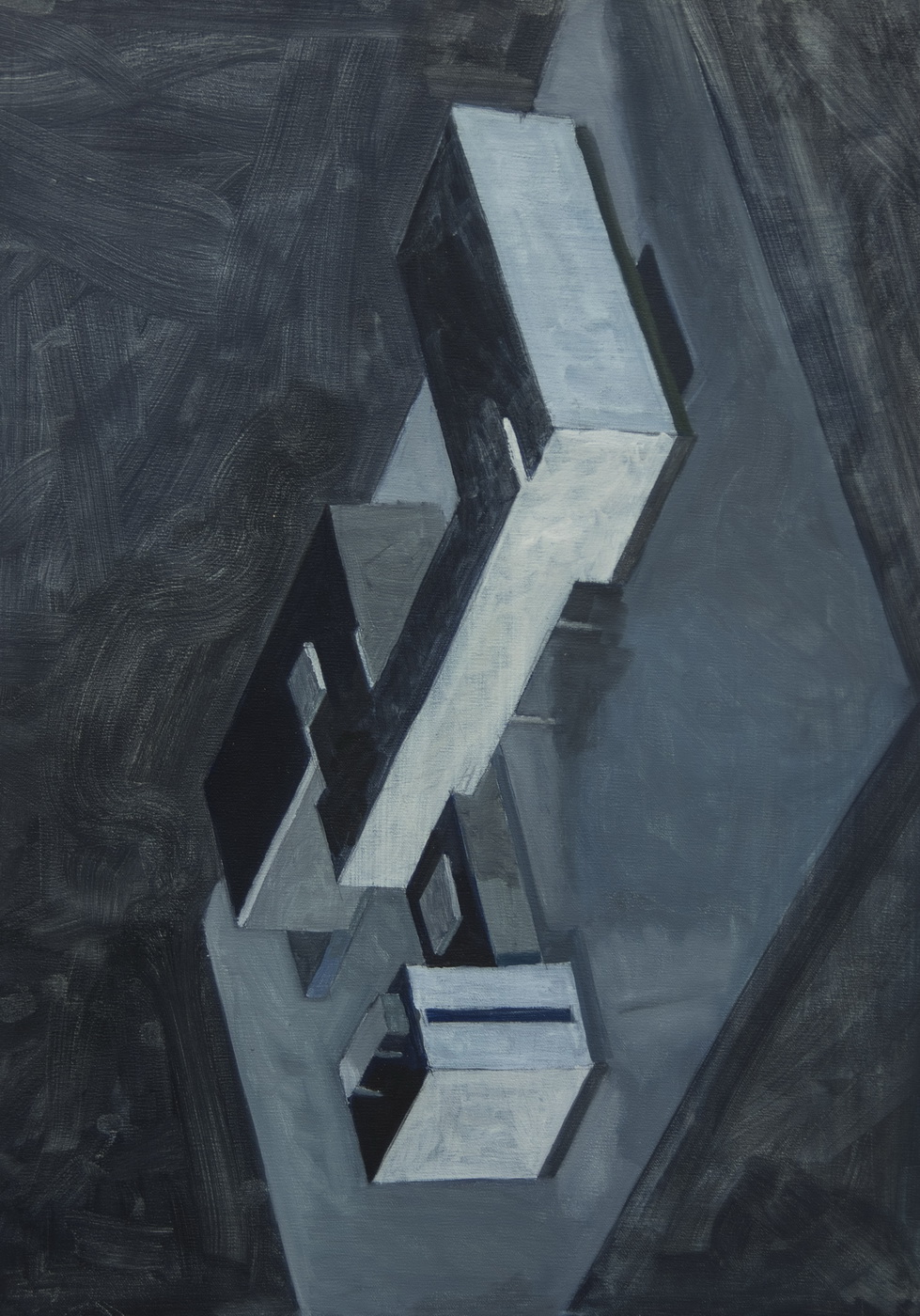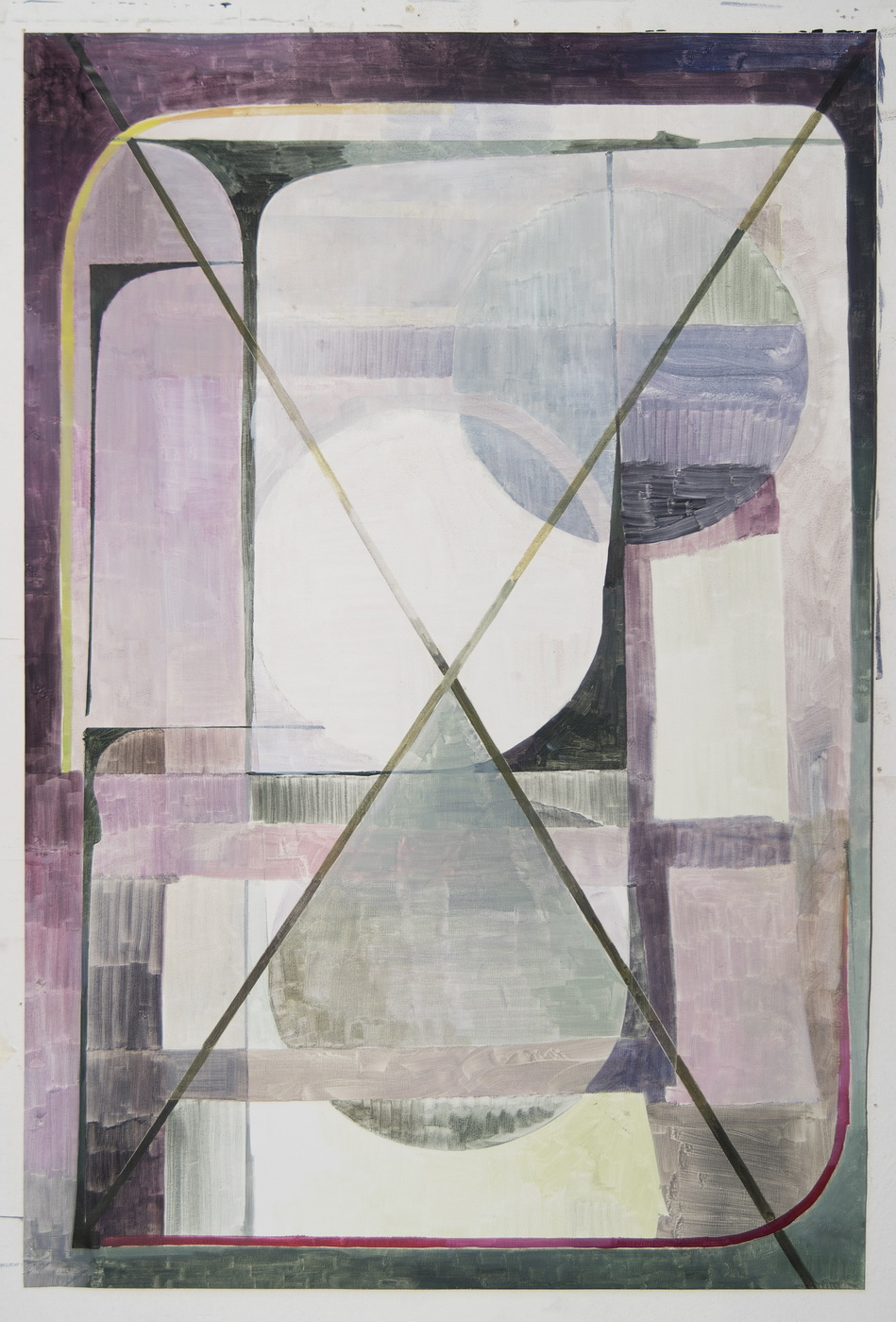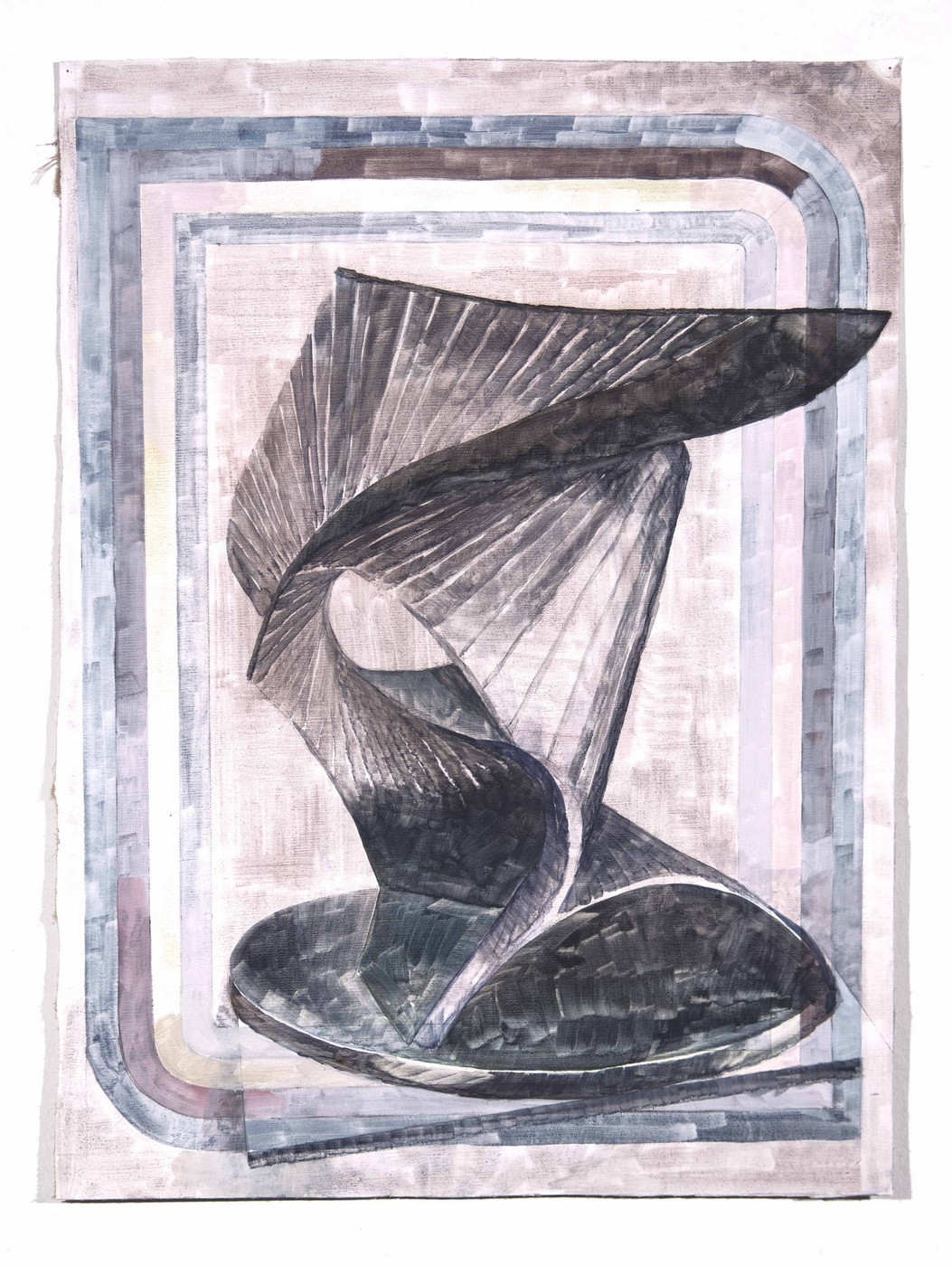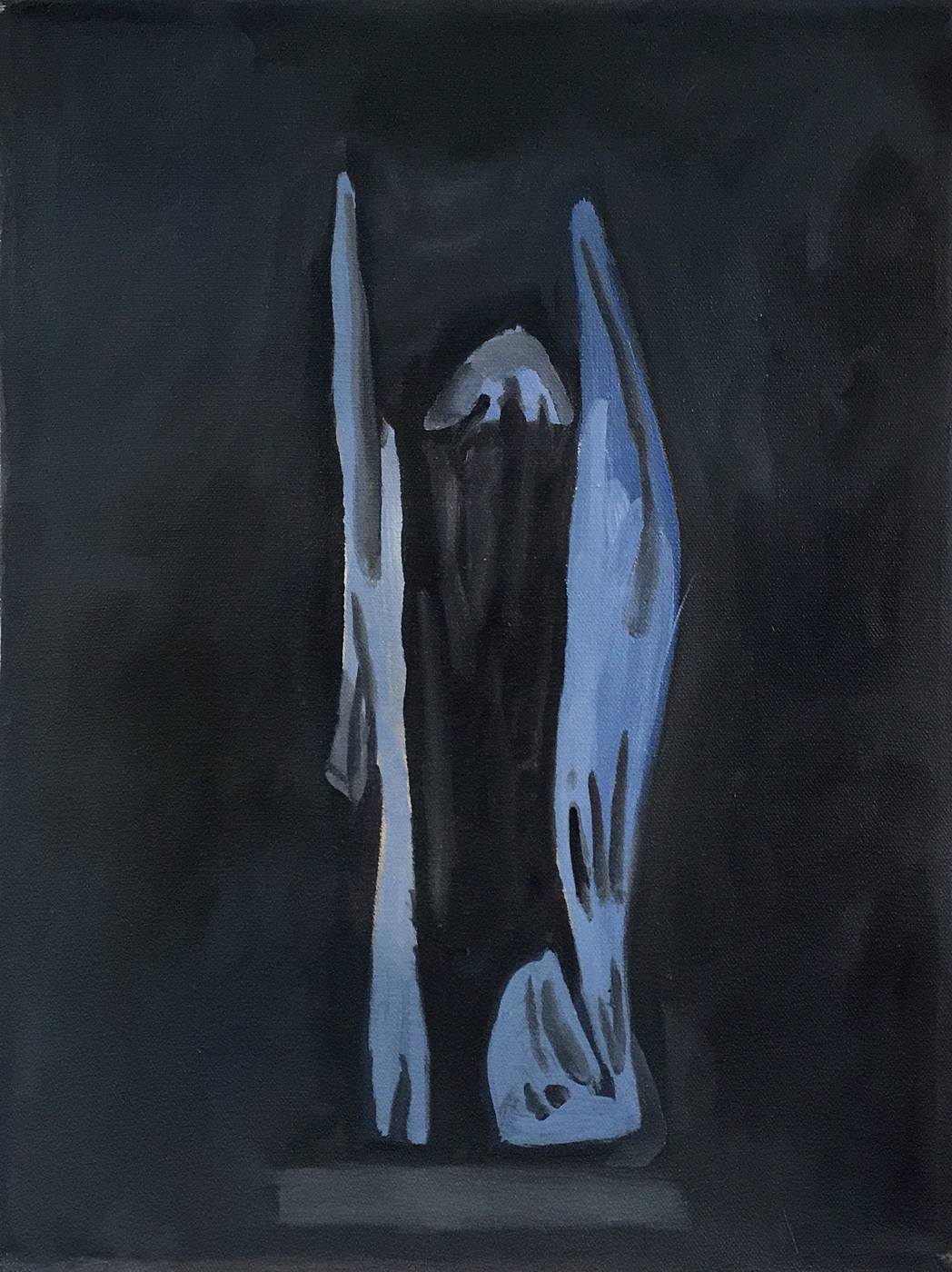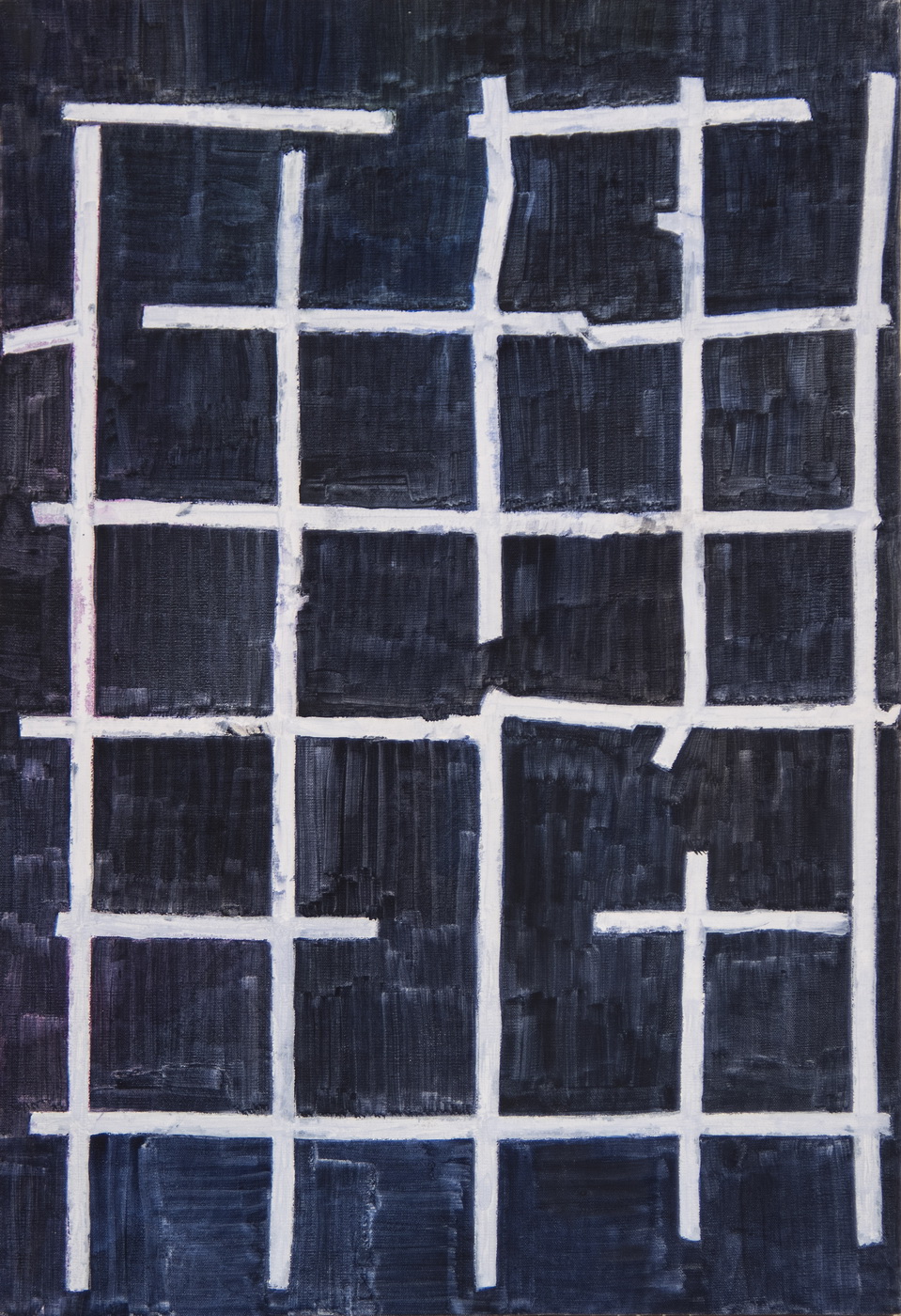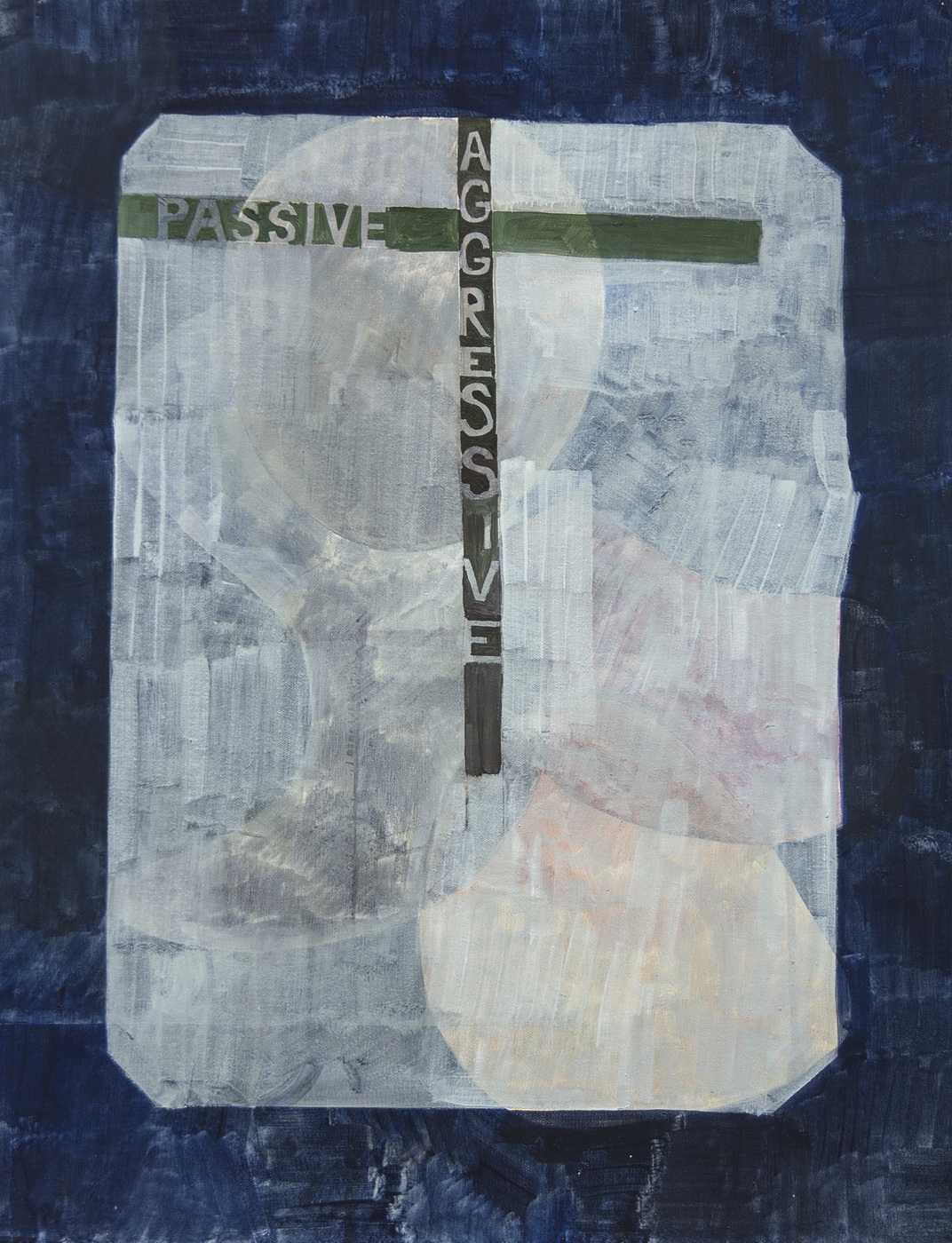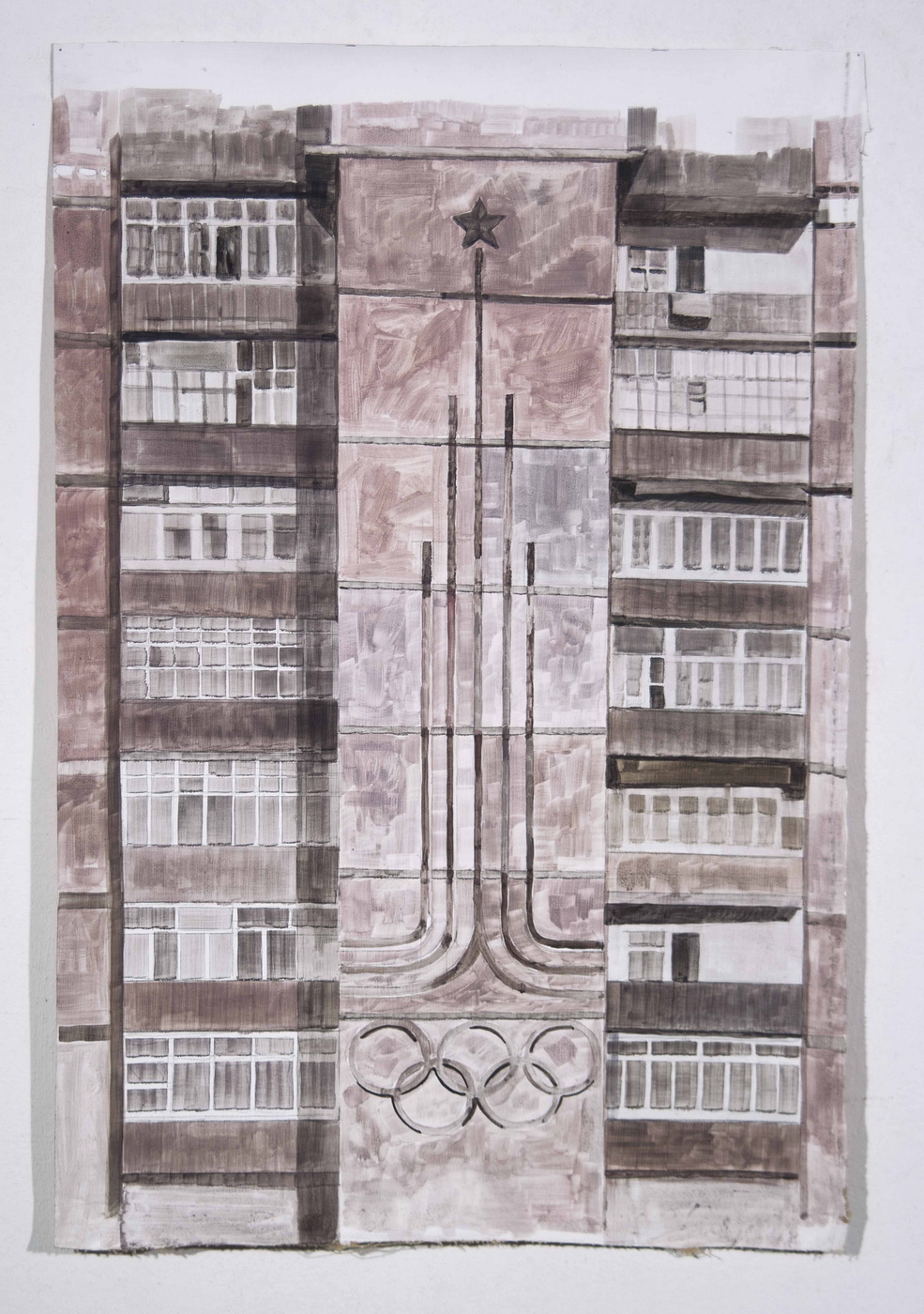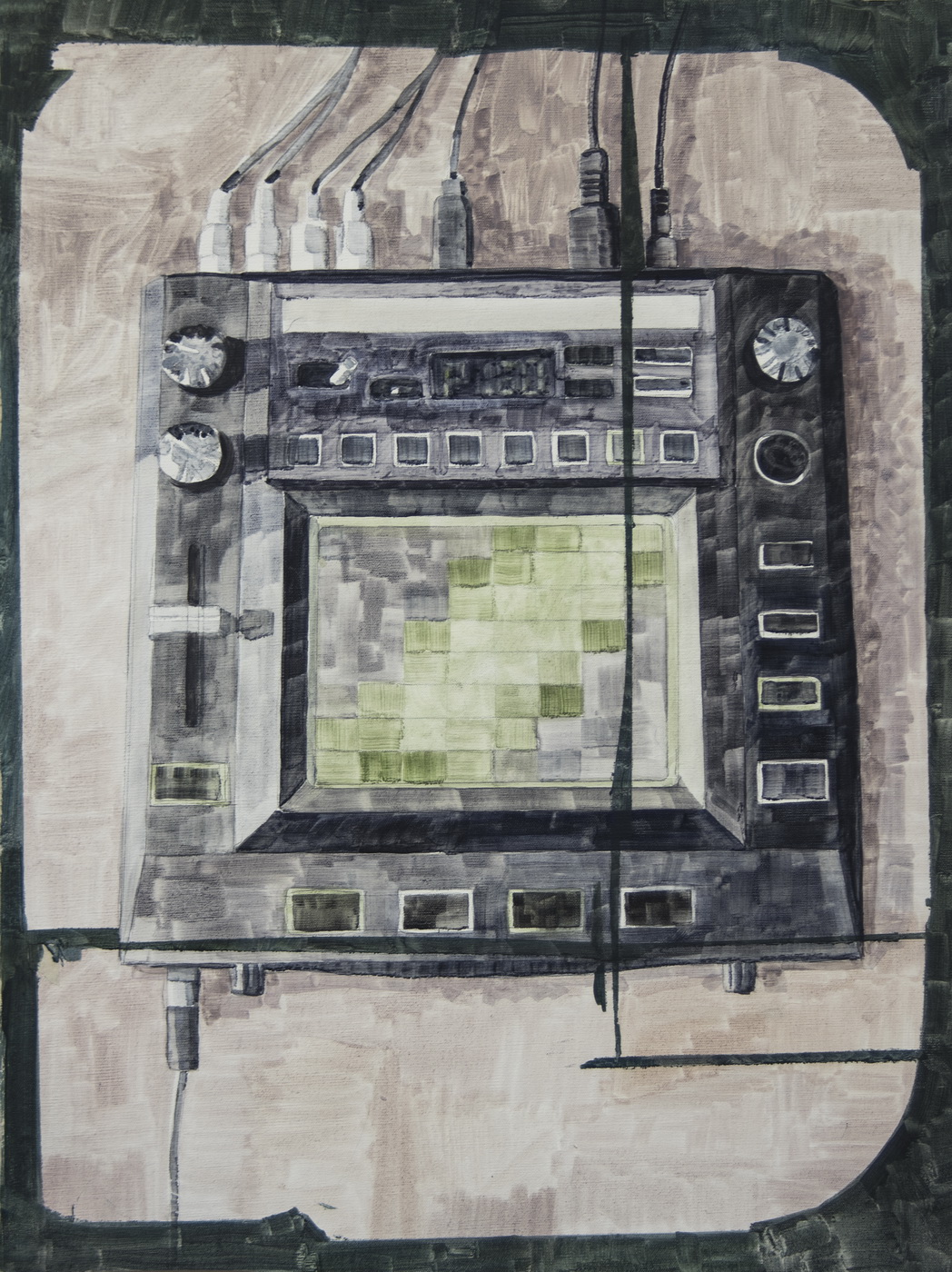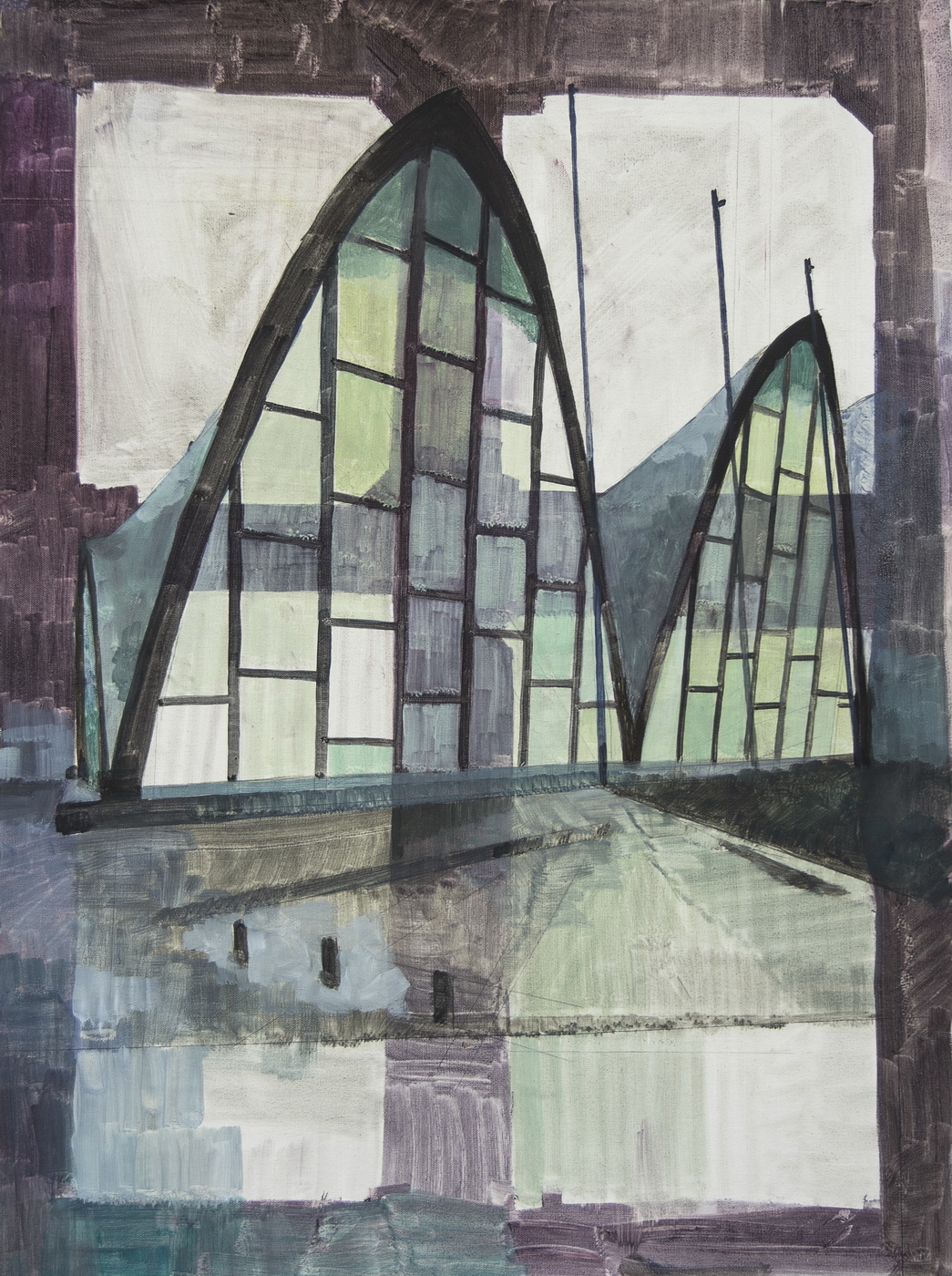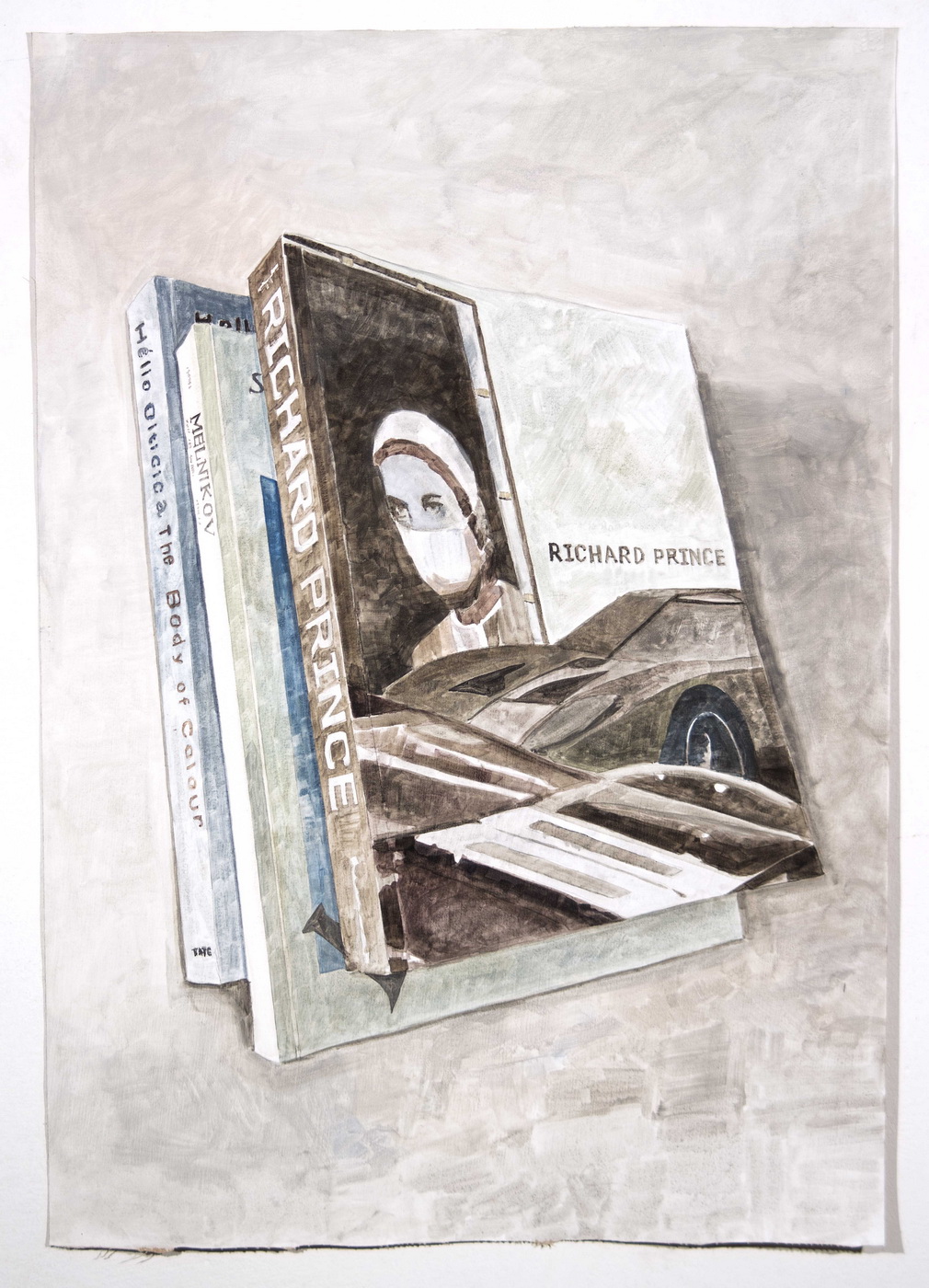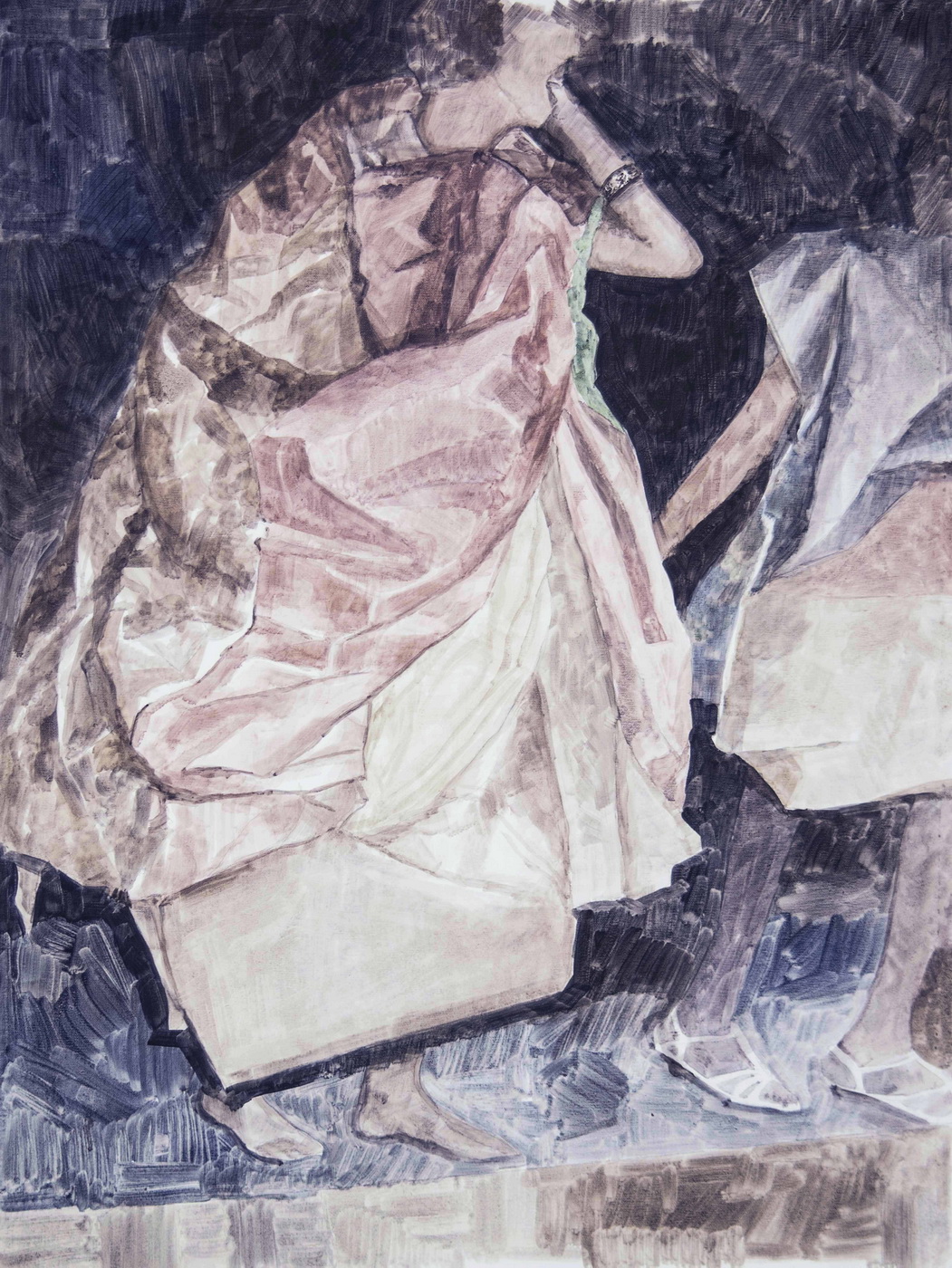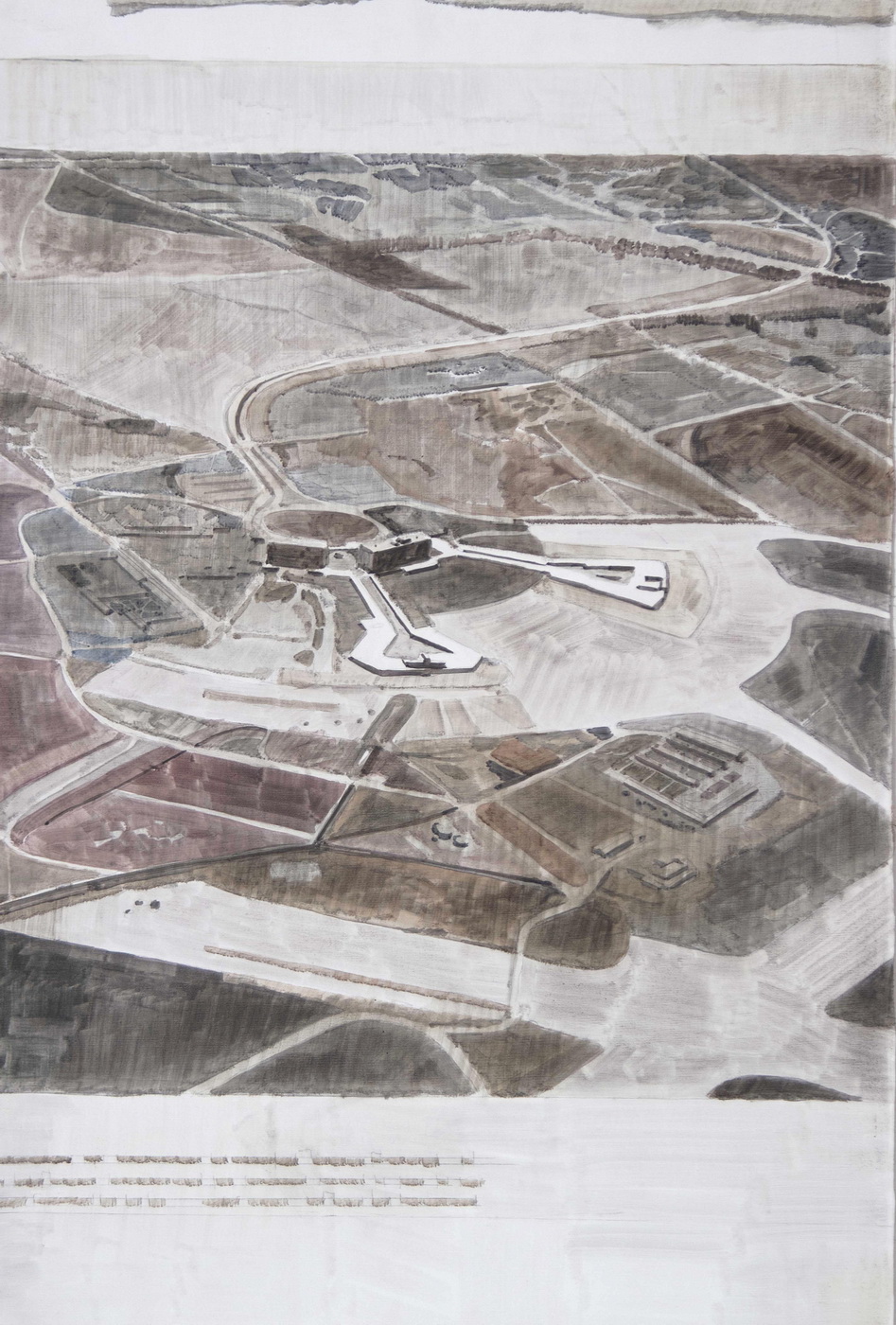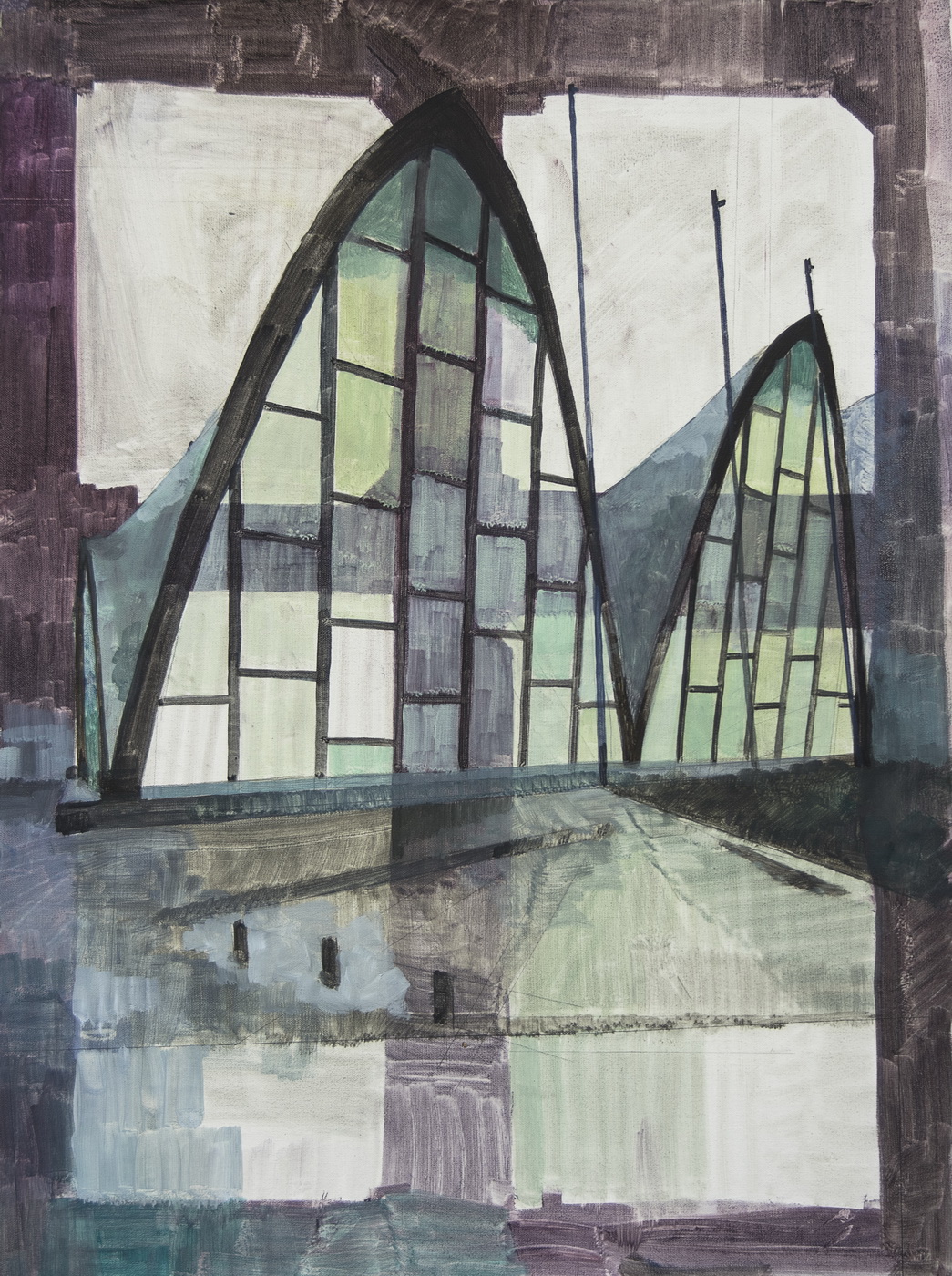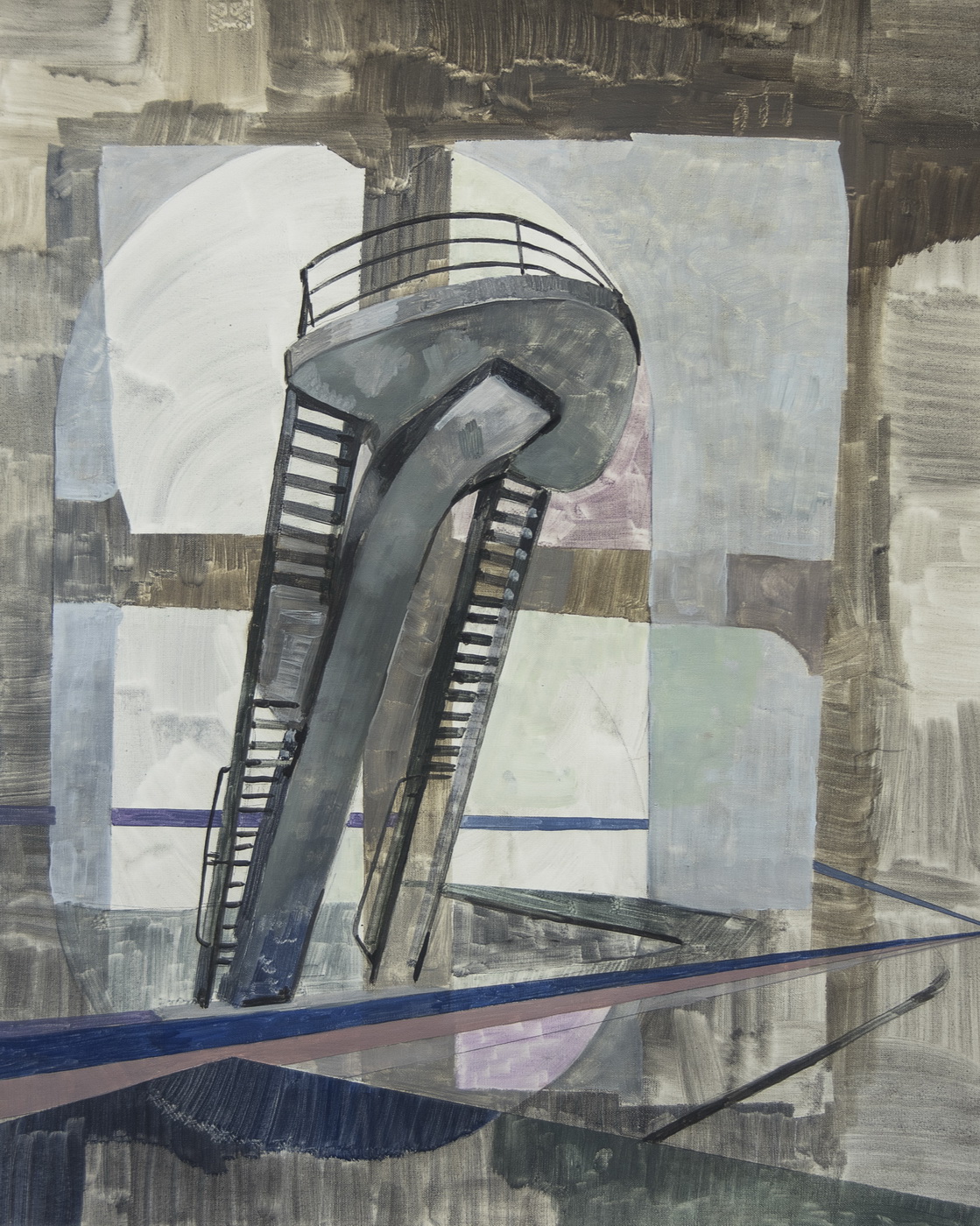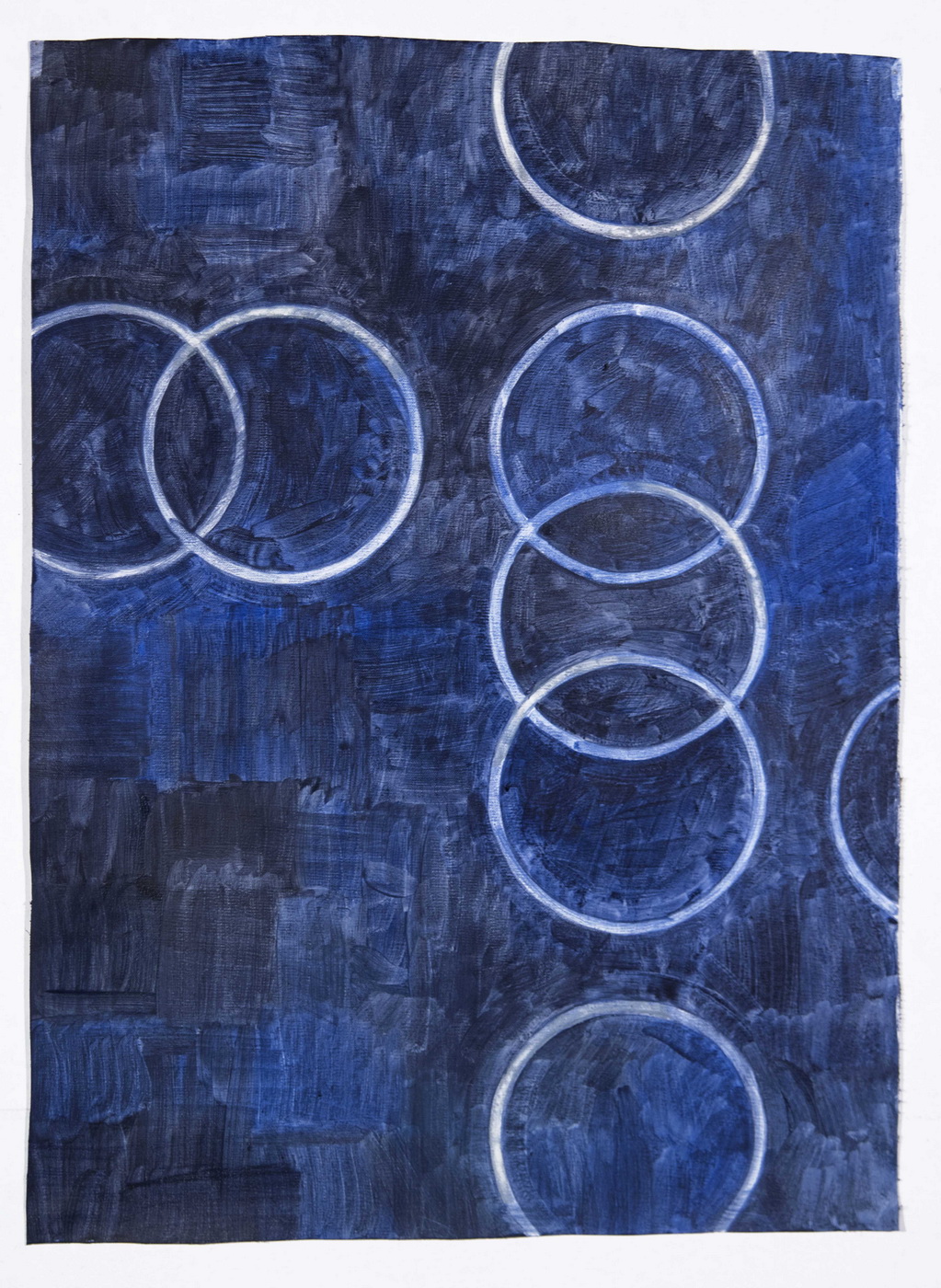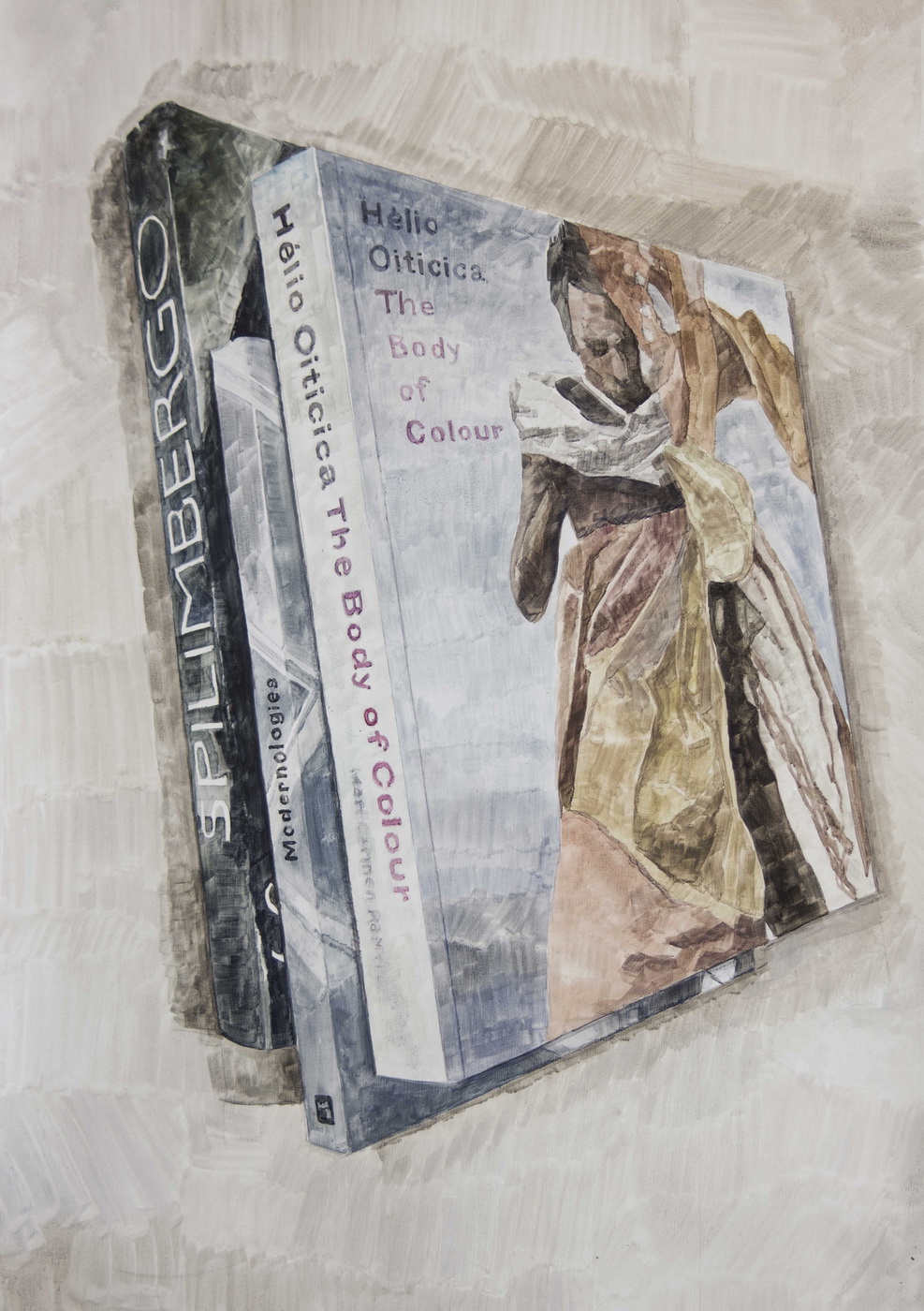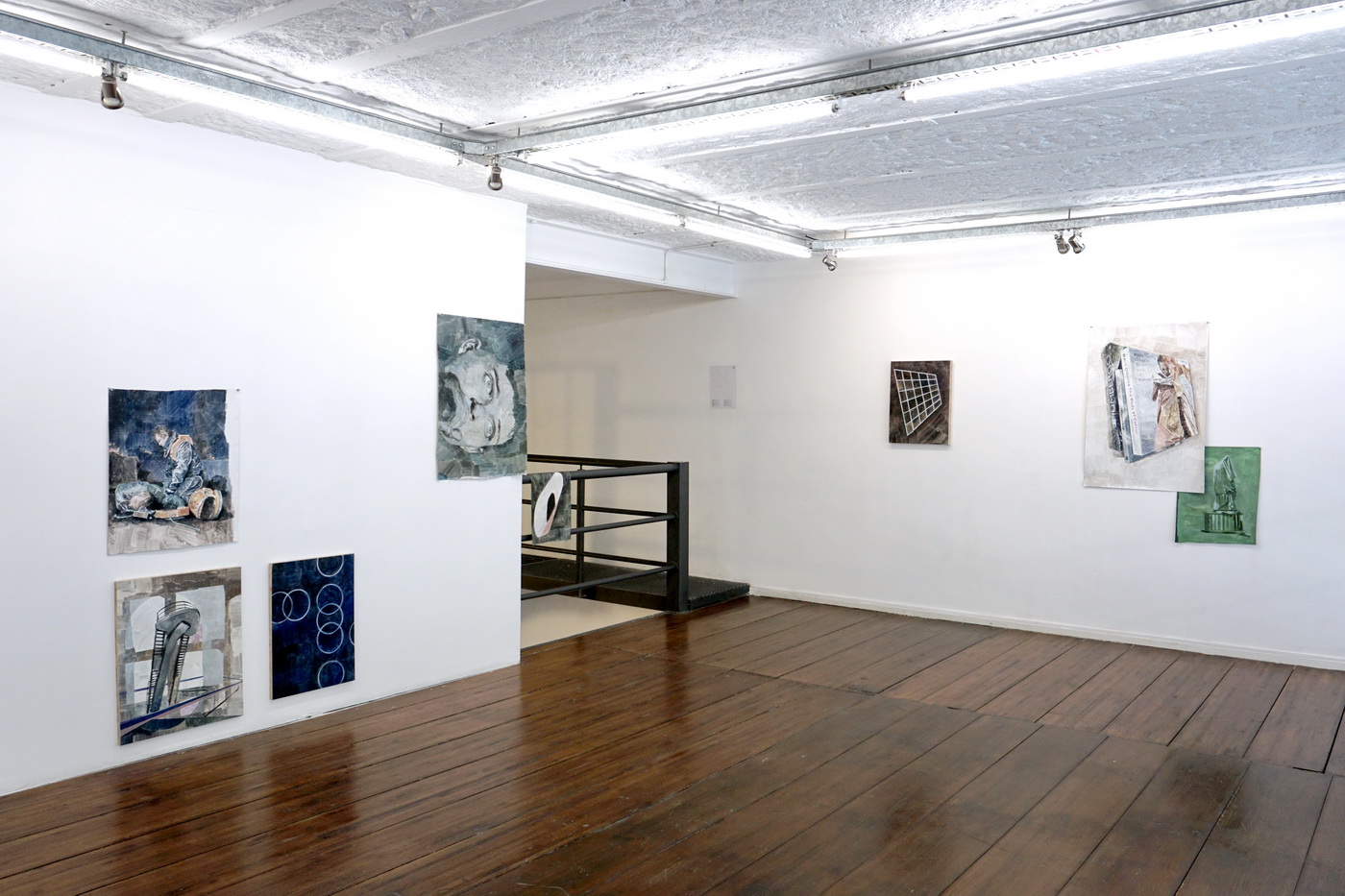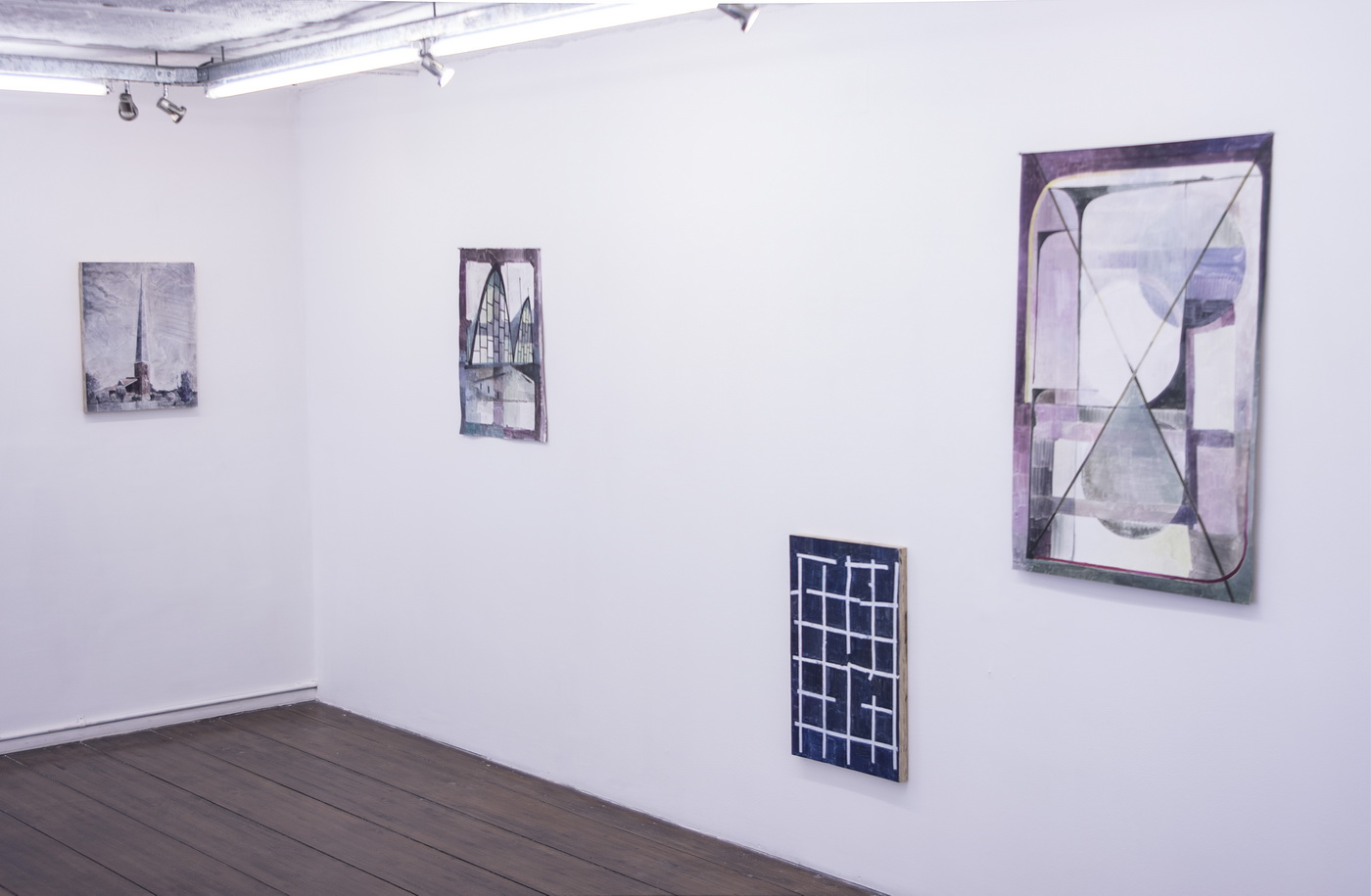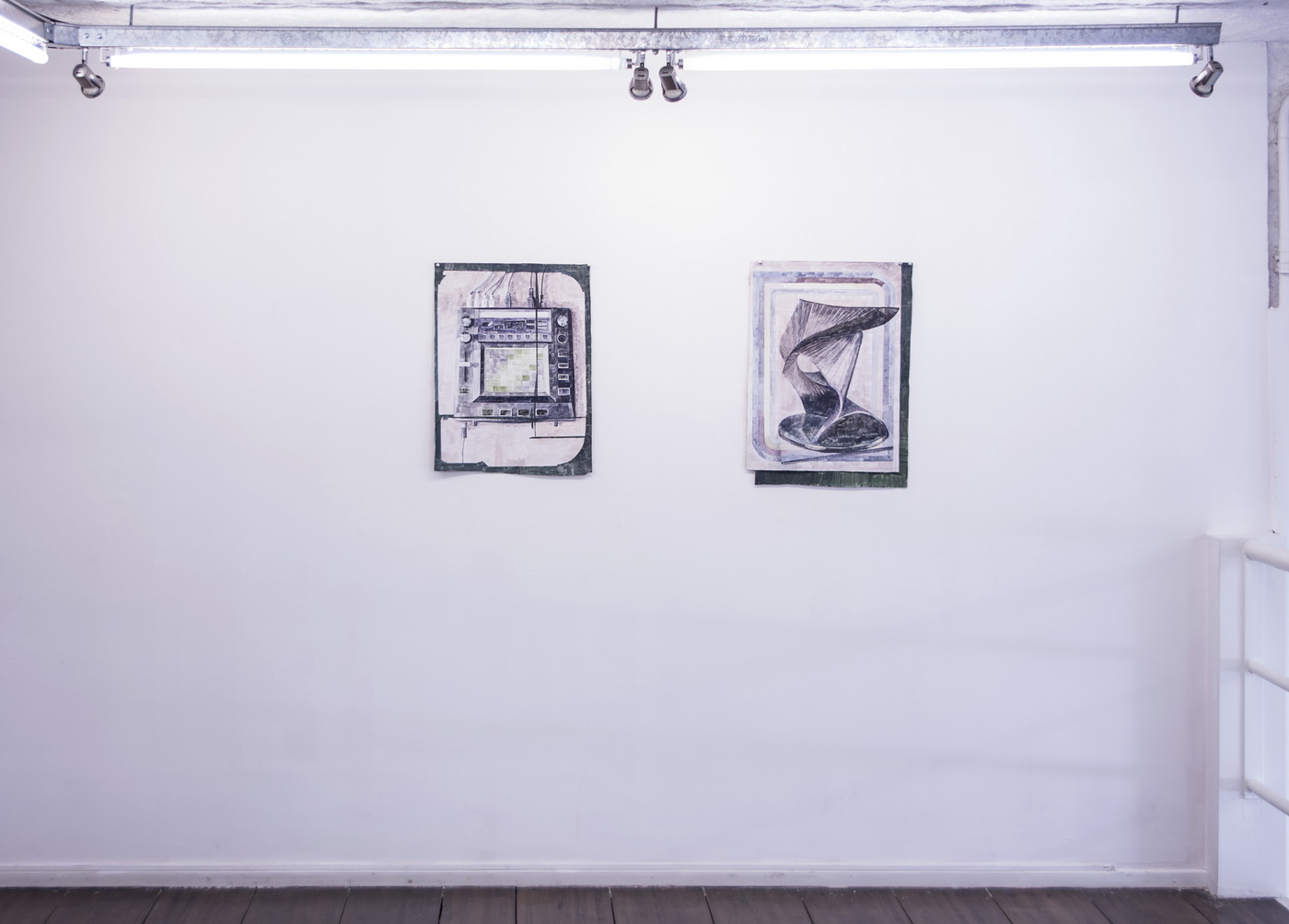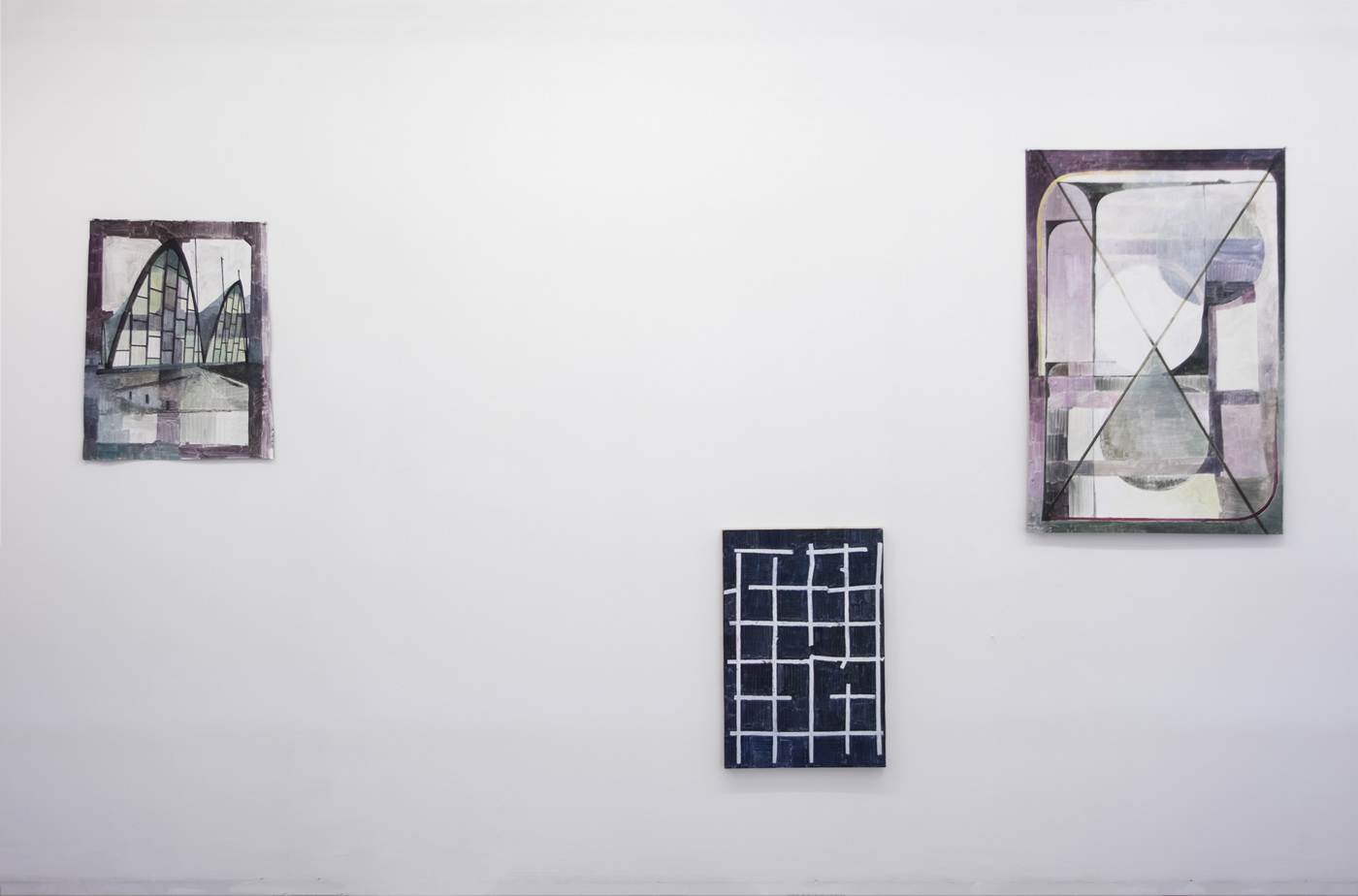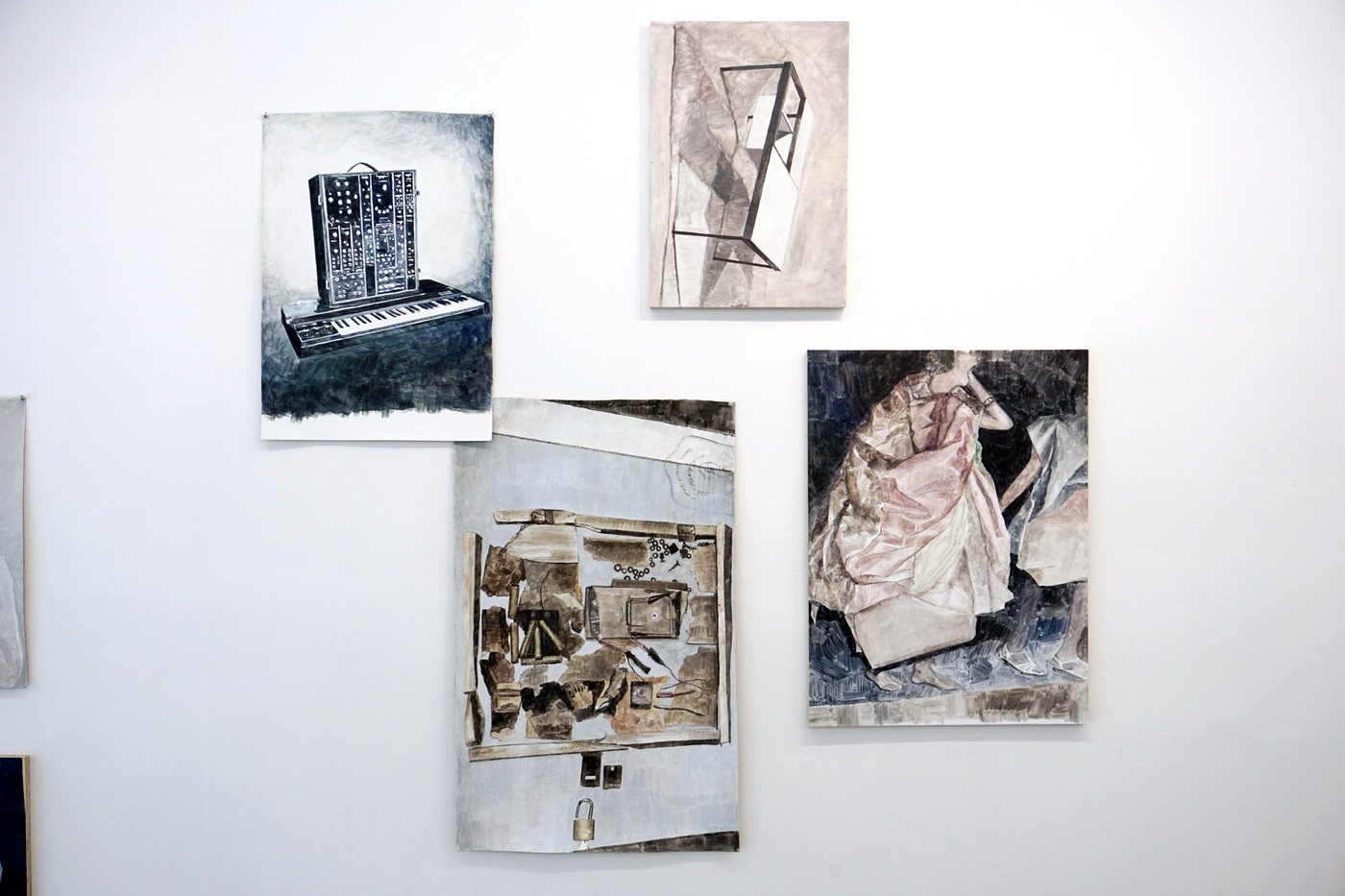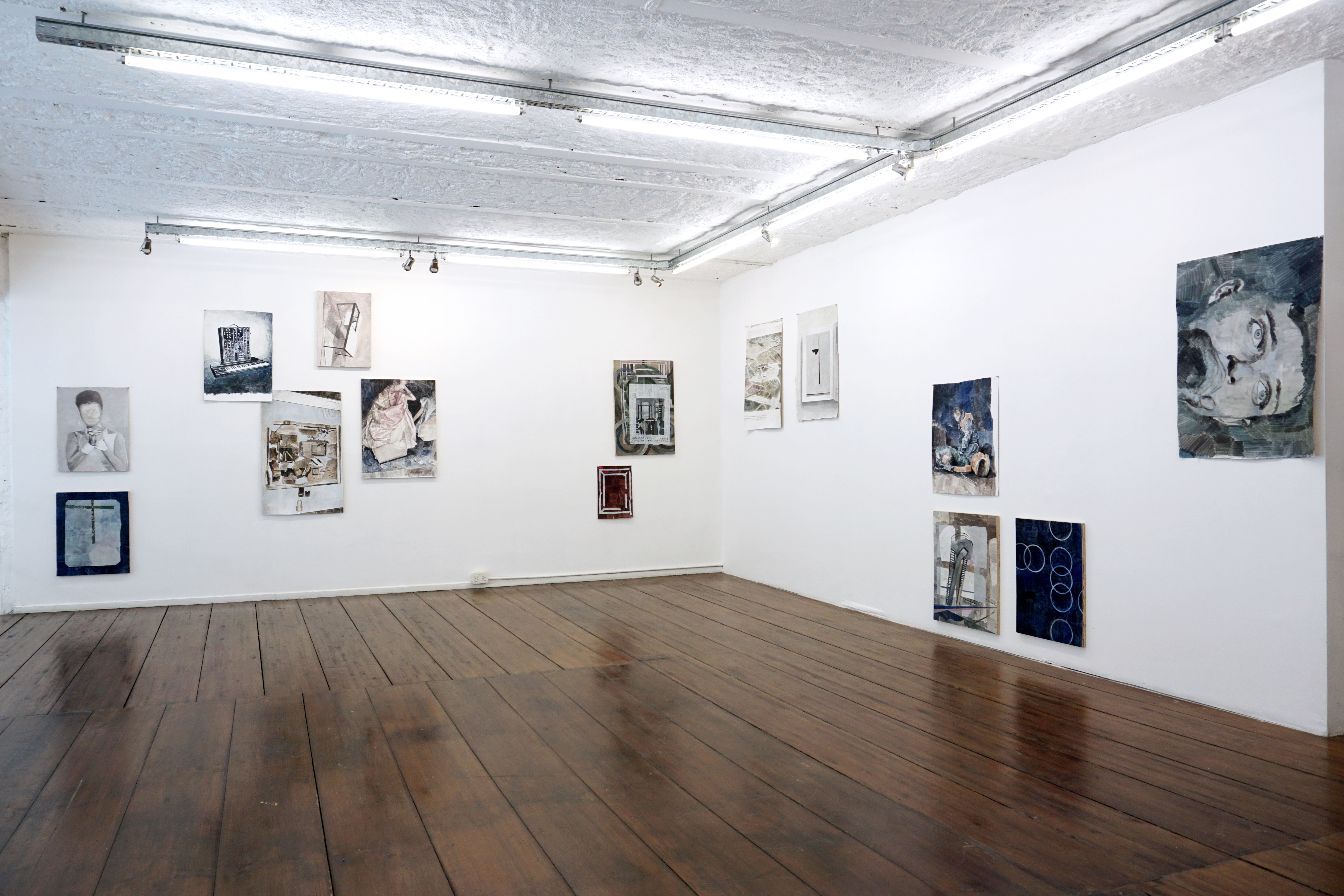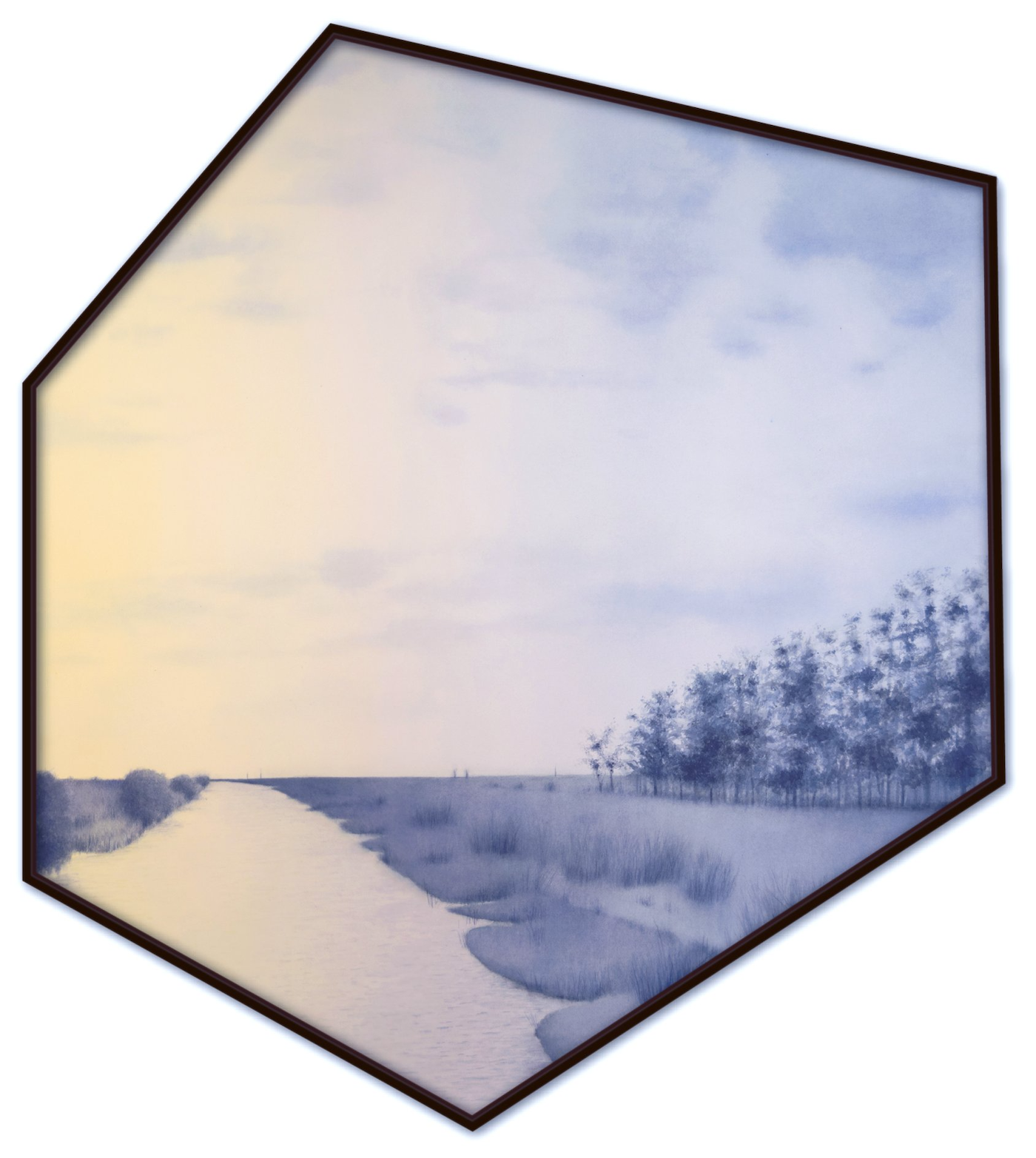The Later, the Stranger
October 28th – December 29th 2017
INFO
ONE
Amadeo Azar based his works on references to Russian Suprematism and Constructivism, on the works of artists belonging to the Argentinean avant-garde movements of the XX Century: Gyula Kosice, Raúl Lozza, and on architectural projects by Francisco Salomone or Konstatin Stpanovich Melnikov. Through different media (watercolour, collage, installations, objects) Azar played on the works of artists who had a blind faith in the transformative potential of art, because he is attracted by these artists’ convictions but also interested in the failure of those great utopias which were materialized in paintings, sculptures or monuments that could imagine a brighter future with more freedom and equality.
In his paintings, Malevich wanted to create new realities, the Constructivists thought that a new social order would trigger the emergence of new visual and expressive forms. The artists in the Argentinean Arte Concreto Invención movement believed that their paintings, with their flat color shapes and industrial finish, would generate in others the will to action, arguing that everyone had the ability to make such artworks, and by doing so, they would feel empowered to act and transform society.
When Amadeo Azar chose to intervene those images a powerful displacement of meaning was enacted, where the original artworks became questioned, estranged. He beautified those images as memory does when recalling a first love, anarchism, or punk rock.
Azar´s works carried several traits of the contemporary: he quoted, referenced and problematized art history. He dazzled with his ability to control the liquid quality of his media of choice, watercolour, and with his exact touch. Precise and precious.
TWO
The very recent paintings in this exhibition are called The Bomb, The Chapel, The Sculpture, The Voices, The Table, The Circles, The Books. Their titles have no adjectives, nor verbs which mark a certain temporal dimension. There is no past. There is no future. Their minimal grammatical structure indicate a state of pure present. What the lack of a temporality indicates is the idea that painting ARE. They are the bomb, the voices, the chapel, the sculpture, the table. When I say the paintings are, I do not imply any tautological game, I mean that there is nothing else beyond that. No interpretation, no allegory, no paraphrase, because he paints tables or books but he could be painting a dog or a mermaid. References are no
longer what they used to be, they do not belong to a specific historical and aesthetic horizon, the consistency of a system of references has collapsed. In contrast to his previous work, the origin of the images is irrelevant, as is their subject matter, or their appeal. These works are neither precise nor precious. Again, I reiterate: these paintings ARE.
Painted on scraps of canvas, their short and rhythmic brushstrokes appear as a strike force expanding over a surface of mute colours. These works are the result of a sincere need to paint, to embrace whim (the decision to paint ANY thing, or to exhibit all paintings vertically even if they have landscape format). And why not, the need to confront a certain art world bureaucracy which demands a certain approach to art. The mutation in his interests and his methods that can be seen in these works respond to an exercise in this artist’s personal experimentation. The Platform, The Circles and The Airport are works that express a mode of self determination, of individual freedom. It is a series in which Azar sheds some of the conceptual operations that are typical of contemporary art and the concomitant domestication of current painting. His exhibition, entitled The Later, The Stranger is like a trance, a liberating dream, an exorcism.
Lara Marmor is an independent curator based in Buenos Aires. She holds a degree in Art History from the University of Buenos Aires. Her curatorial projects have been exhibited at Fundación Proa, Instituto Di Tella, National Endowment for the Arts, Museo Caraffa, and other major art institutions in Argentina. She is Professor in Curatorial Practices at Universidad Torquato Di Tella. In 2013 she received the Prize to Young Curators awarded by arteBA.
PRESS
21 de Diciembre de 2017
UN PUENTE CREATIVO ENTRE EL RIO DE LA PLATA Y ESTADOS UNIDOS, EN VILLA CRESPO
Daniel Gigena
go to article

